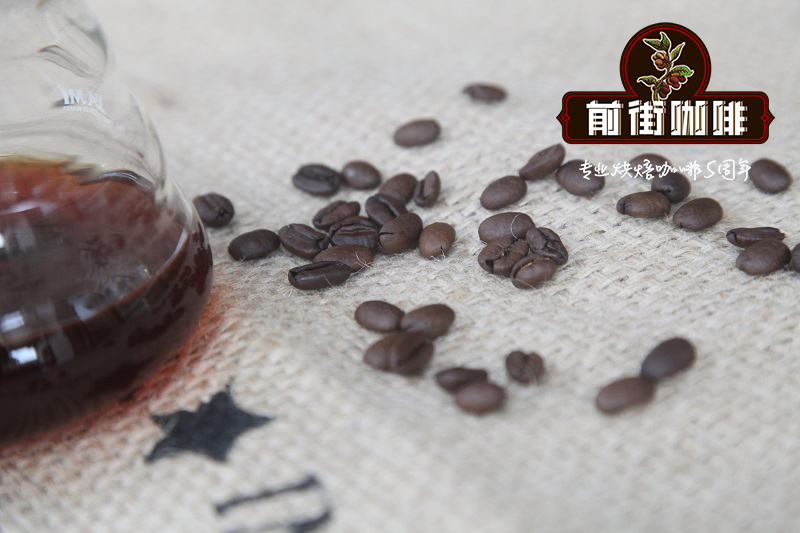Why is coffee sour? What's in the coffee? What is chlorogenic acid?

Professional coffee knowledge exchange More coffee bean information Please pay attention to coffee workshop (Weixin Official Accounts cafe_style)
Chlorogenic acid is an antioxidant. Antioxidant effects, which reduce cell damage from free radicals, are thought to be associated with chronic disease or cancer prevention.
Chlorogenic acid content varied with baking degree, light baking was the highest, medium baking was the second, heavy baking was almost none.
Chlorogenic acid is a generic term.
caffeoylquinic acids (CQA),
dicaffeoylquinic acid (diCQA),
Feruloylquinic acids (FQA), etc., and other acid families.
It can be called chlorogenic acid. Coffee quinic acid is the most abundant chlorogenic acid in coffee.
There have been hundreds of scientific articles on chlorogenic acid. But how many people really understand chlorogenic acid? Do you know how important chlorogenic acid is to the cup in our hands?
What is chlorogenic acid?
Chlorogenic acid is found in many plants, not just coffee.
What are the benefits of chlorogenic acid for plants?
What do plants do with it?
Chlorogenic acids belong to the phenolic acids family. In nature, phenolic compounds are often seen by plants as a weapon against insects or as a means of communicating with microorganisms in the soil.
Chlorogenic acid in coffee beans accounts for 6 to 12 percent of the total weight (calculated by dry weight), which is quite high and is the most abundant acid of all acids in coffee.
The percentage of chlorogenic acid varies depending on the coffee bean, ranging from 6 percent to 12 percent. The difference in content comes from different varieties of beans, and of course its growing environment will also affect, for example, different growing soil, climate (high and low latitude) and even humidity. However, the proportion of genes is still the largest. Robusta beans generally contain more chlorogenic acid than arabica beans.
At this time, there may also be questions: What if the chlorogenic acid in coffee beans in different ripeness coffee fruits is analyzed on the same tree? The answer that can be given at present is that if coffee beans come from immature fruits, they contain a different proportion of chlorogenic acid than mature fruits. This will affect the taste of the drink.
Chemical reactions in baking
Baking, or baking, is the process of frying beans at high temperatures.
Chlorogenic acid presents an unstable state at high temperature and produces chemical decomposition reaction. So the longer the beans are baked, the lower the chlorogenic acid content.
So dark baked beans have little or no chlorogenic acid.
Generally speaking, light roasts (230℃ & 250℃, 12 minutes) have about 60% chlorogenic acid left; medium roasts have only 40% chlorogenic acid left; dark roasts have almost no chlorogenic acid left.
During baking at high temperatures (typically above 200 ° C), chlorogenic acid is thermally decomposed, partly to form chlorogenic acid lactone compounds; partly to caffeic acid and quinic acid; and perhaps partly to other compounds that have not yet been discovered.
However, whether it is chlorogenic acid lactone, caffeic acid or quinic acid, it will continue to produce chemical reactions due to high temperature baking, and finally form more than 30 different compounds. Therefore, when the same batch of coffee beans, due to different roasting temperatures, roasting times, or machine differences, the proportion of compounds in the beans will also vary.
What are the benefits of chlorogenic acid?
Coffee is generally believed to be good for you. Like all polyphenols, chlorogenic acid has antioxidant properties. Research into coffee's antioxidant power continues, and chlorogenic acid, like other polyphenols, is known to protect against free radicals in the body.
But the benefits of coffee go beyond that. Recent studies suggest that chlorogenic acid in coffee slows the absorption of carbohydrates in the intestine.
Does chlorogenic acid affect coffee flavor?
Does chlorogenic acid taste good? Or bad? Not sure yet. However, the amount of chlorogenic acid in a cup of coffee depends on the degree of roasting. Coffee brewing method, little impact.
It has been said that chlorogenic acid should taste bitter or metallic, but this has not been proved yet. What does chlorogenic acid taste like is really curious. However, when you think about it carefully, most of the chlorogenic acid in the coffee in our hands is decomposed into other ones. It seems that we don't know the taste of chlorogenic acid. Even so, it is hoped that one day the taste of all the compounds in coffee can be completely defined. Just thinking about it makes me feel like I have a long way to go. Having said that, on the other hand, we should also feel satisfied that the chlorogenic acid in coffee is so good. In a few minutes, hundreds of chemical reactions occur in a small bean, not only satisfying taste buds, but also providing substantial benefits.
For more professional coffee exchanges, please scan the code to follow WeChat: FrontStreetCoffee
Professional coffee knowledge exchange More coffee bean information Please pay attention to coffee workshop (Weixin Official Accounts cafe_style)
Important Notice :
前街咖啡 FrontStreet Coffee has moved to new addredd:
FrontStreet Coffee Address: 315,Donghua East Road,GuangZhou
Tel:020 38364473
- Prev

What are the ingredients of coffee? The caffeine content of coffee beans caffeine in coffee
Professional coffee knowledge exchange more coffee bean information please follow the coffee workshop (Wechat official account cafe_style) Why some coffee has the sour taste of plums? Some even smell like fruit vinegar. Why do some beans look so shiny? Is it because it has been kept for a long time? Why does some coffee taste so bitter? And caffeine. . . . Isn't it?
- Next

Hand coffee utensils V60 coffee filter cups recommend V60 filter cups of different materials. What's the difference?
Professional coffee knowledge exchange more coffee bean information please follow the coffee workshop (Wechat official account cafe_style) the HARIO V60 coffee filter cup named with a tilt of 60 degrees has attracted the attention of coffee professionals all over the world in recent years, especially after Taiwan's Chad Wang won the world coffee brewing competition by virtue of it in 2017.
Related
- Beginners will see the "Coffee pull flower" guide!
- What is the difference between ice blog purified milk and ordinary milk coffee?
- Why is the Philippines the largest producer of crops in Liberia?
- For coffee extraction, should the fine powder be retained?
- How does extracted espresso fill pressed powder? How much strength does it take to press the powder?
- How to make jasmine cold extract coffee? Is the jasmine + latte good?
- Will this little toy really make the coffee taste better? How does Lily Drip affect coffee extraction?
- Will the action of slapping the filter cup also affect coffee extraction?
- What's the difference between powder-to-water ratio and powder-to-liquid ratio?
- What is the Ethiopian local species? What does it have to do with Heirloom native species?

